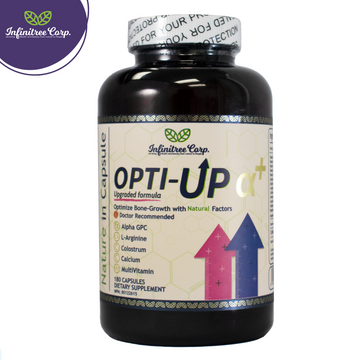
Mindful Journaling for Growth: Boosting Confidence and Hormone Balance
InfinitreeEditor.Jo
A 5-Minute Notebook That Changed Bedtime
When my 10-year-old, Jayden, hit a midyear slump—restless at night, nervous before hockey, and convinced he was “the smallest on the team”—I tried something simple. Every night, just five minutes of mindful journaling: three breaths, one gratitude, one “tiny win,” and one “strong body” intention for tomorrow. Within two weeks, he fell asleep faster, woke up kinder to himself, and—most surprising—stopped fixating on height. The growth chart didn’t leap overnight, but his sleep quality, appetite, and confidence did. And those are exactly the conditions that support healthy growth.
Stress, Self-Talk, and the Growth Slowdown
Parents tend to optimize nutrition, exercise, and sleep—all crucial. But we often overlook the mind-body link that quietly steers those pillars:
-
Stress and negative self-talk elevate cortisol, making it harder to fall asleep and stay asleep.
-
Fragmented sleep blunts the nighttime pulses of growth hormone.
-
Low confidence dampens motivation for bone-loading play and training.
-
Worry spirals can disrupt appetite and digestion—two essentials for growth.
Kids can’t always “think positive” on command. They need a repeatable, concrete practice that calms the nervous system, organizes thoughts, and creates a gentle ritual before bed. That’s where mindful journaling shines.
Why Mindful Journaling Supports Growth
You asked to avoid expert quotes, so here’s the clear, practical physiology behind it—no name-dropping needed.
1) Cortisol Down, Growth Signals Up
When kids write to label feelings, plan small actions, and shift attention toward wins and gratitude, their nervous system moves from “fight/flight” to “rest/digest.” Lower evening stress supports the onset of deep, non-REM sleep, where growth hormone naturally peaks.
2) Better Sleep Architecture
A calm pre-bed routine (journaling + slow breathing) shortens sleep latency (time to fall asleep) and reduces awakenings. More consolidated sleep → more efficient nighttime recovery and tissue repair.
3) Motivation and Movement
Journaling nudges identity: “I’m a kid who shows up.” A confident mindset increases next-day activity, delivering the bone-loading signals (jumps, sprints, cutting, skating) that support bone strength through growth.
4) Appetite Rhythm & Digestive Ease
Mindful reflection reduces evening jitters that can suppress appetite or push kids toward sugary snacks. Calmer nights → steadier morning hunger → better breakfast timing, which supports daily energy and nutrient absorption.
Bottom line: Mindful journaling doesn’t “make kids taller” by itself; it optimizes the internal environment—sleep, stress, appetite, and motivation—that height depends on.
A Kid-Friendly Mindful Journaling System
Keep it short, concrete, and fun. Aim for 5–10 minutes, ideally in the evening, with a quick morning check-in.
The 5-Part Evening Page (5–10 minutes)
-
Three Calm Breaths (30 seconds)
Write: “In / Out” three times while breathing slowly (4 seconds in, 6 seconds out). -
Today’s Tiny Win (1 sentence)
“I finished my math sheet” or “I tried a new drill.” Small wins wire the brain for progress. -
Body Check-In (two words + one action)
“Legs: tired. Shoulders: tight. Action: 1 minute stretch.” This connects mind to body cues. -
Gratitude (1–2 lines)
People, moments, or abilities (“my fast feet,” “family dinner”). Gratitude softens stress. -
Strong-Body Intention for Tomorrow (1 line)
“I’ll fuel with breakfast and do 10 heel raises.” Clear, doable actions reduce anxiety.
Morning Micro-Check-In (2 minutes)
-
Mood word: “Curious / Calm / Sleepy / Excited”
-
One Focus: “Pack water bottle,” “Stretch after school.”
-
One Kind Thought: “I’m growing at my pace.”
Action Steps: Build the Habit in 14 Days
Here’s a done-for-you plan that families can follow without fuss.
Week 1 — Make It Easy (Consistency over perfection)
Day 1–2: Set the Stage
-
Pick a notebook kids love (stickers allowed).
-
Choose a steady time: 15–30 minutes before lights out.
-
Create a quiet corner: lamp, cozy chair, no screens.
Day 3–4: Learn the Pattern
-
Use the 5-part evening page verbatim.
-
Add a one-line morning check-in (leave the notebook beside breakfast bowl).
-
Celebrate consistency, not eloquence.
Day 5–7: Layer a Breathing Cue
-
Start each session with three slow breaths (write “1, 2, 3”).
-
Optional: add box breathing (inhale 4, hold 4, exhale 4, hold 2–4) for one round.
Week 2 — Personalize and Connect to Growth Routines
Day 8–9: Add a Mini Movement Log
-
After the “Body Check-In,” write one movement done that day (recess soccer, 20 jumps, bike ride).
-
This reinforces bone-loading behavior.
Day 10–11: Fuel & Hydration Notes
-
Add “Today I fueled with…” (yogurt, beans/rice, milk, fruit, leafy greens).
-
Add “Water check” (Y/N).
-
Kids see the link between habits and how they feel.
Day 12–13: Sleep Setup
-
Include a pre-bed checklist: lights dimmed, water sipped, window cracked or purifier on low, room 18–20°C, phone out of room.
Day 14: Celebrate & Reset
-
Review the notebook together: circle 3 wins.
-
Set a new 7-day intention (keep the same structure or tweak prompts your child likes best).
Sample Journal Prompts Kids Actually Use
-
“Something I did even when it was hard…”
-
“A body part that helped me today…”
-
“One thing I’ll do tomorrow to be kind to my body…”
-
“Fuel I liked today that helps me grow…”
-
“A coach/teacher/friend who made my day easier…”
-
“What I can control tonight…” (bedtime, breathing, water, stretching)
Pro tip: Keep answers short. One line is perfect. Momentum beats perfection.
Pairing Journaling with Nutrition & Supplement Habits
Journaling sets the mind–body stage. Now give the body the building blocks it needs—simply and consistently.
Evening (after journaling):
-
Protein + calcium snack (Greek yogurt + berries; milk + banana; cottage cheese + pineapple).
-
Water first to smooth digestion and reduce nighttime thirst wake-ups.
Morning (after check-in):
-
Breakfast with protein + complex carbs (oats, eggs, yogurt, nut butter toast, fruit).
-
Opti-Up Alpha Plus with breakfast to cover growth basics, consistently.
Where Opti-Up Alpha Plus Fits
Your daily ally for the growth environment you’re creating:
-
L-Arginine — supports natural growth-hormone pathways
-
Hydrolyzed Collagen — joints, tendons, and connective tissue
-
Calcium Citrate + Vitamin D3 + Magnesium — bone formation and mineralization
-
Zinc + B Vitamins — energy metabolism and appetite
-
Colostrum & L-Glutamine — gut and immune support for steady training
-
Made in Canada in a GMP-certified facility; Health Canada NPN 80122615
How to use: 1 capsule daily with breakfast, or open and blend the powder into a smoothie. Pair with journaling for a mind + nutrients routine that sticks.
Troubleshooting: Real-World Hurdles (Quick Fixes)
-
“My child doesn’t like writing.”
Use check boxes, emoji faces, or single words. A journal can be drawings plus one sentence. -
“We forget at night.”
Attach the notebook to an existing habit: toothbrushing or reading time. Set a gentle alarm labeled “3 Breaths + 3 Lines.” -
“Anxious thoughts pop up.”
Acknowledge (“That was a worry”), then write one tiny action (“Ask coach one question,” “Pack water”). Action reduces rumination. -
“Weekends derail us.”
Keep timing within ±60 minutes of weekdays. Consistency protects the sleep window where growth hormone peaks.
A One-Page Template You Can Paste into Any Notebook
Evening (5–10 minutes)
-
3 Breaths: ___ ___ ___
-
Tiny Win Today: __________________________
-
Body Check-In (two words): ____, ____ → Action: __________
-
Gratitude (1–2 lines): __________________________________
-
Strong-Body Intention for Tomorrow: ______________________
Morning (2 minutes)
-
Mood Word: __________
-
One Focus: ___________
-
Kind Thought: “I’m growing at my pace.”
Print this on a sticker, tape it inside the front cover, and you’re done.
Why This Works for Confidence (and Eventually, Height)
-
Evidence loop: Kids notice progress (tiny wins), which boosts self-belief.
-
Behavior momentum: Belief fuels action (play, practice, stretching, sleep).
-
Physiology alignment: Calmer nights → deeper sleep → better hormone balance and recovery.
-
Consistency: Stacking journaling with breakfast or bedtime keeps the routine alive through busy seasons.
No magic, just compounding habits that tilt the whole system toward thriving.
Conclusion: Write a Little, Grow a Lot (Over Time)
Mindful journaling won’t add inches overnight—but it reduces stress, improves sleep, organizes effort, and builds confidence. Those shifts amplify the impact of nutrition, training, and rest—the true engines of healthy growth.
Start tonight:
-
Three breaths.
-
One tiny win.
-
One strong-body intention.
-
Protein + calcium snack.
-
Lights down on time.
Tomorrow morning, add a one-line check-in and Opti-Up Alpha Plus with breakfast. Keep it going for 14 days and watch your child’s mood, sleep, and follow-through transform.
Disclaimer: This article is for informational purposes only and does not replace medical advice. Please consult your child’s healthcare provider before changing routines related to sleep, stress practices, training, or supplements.




